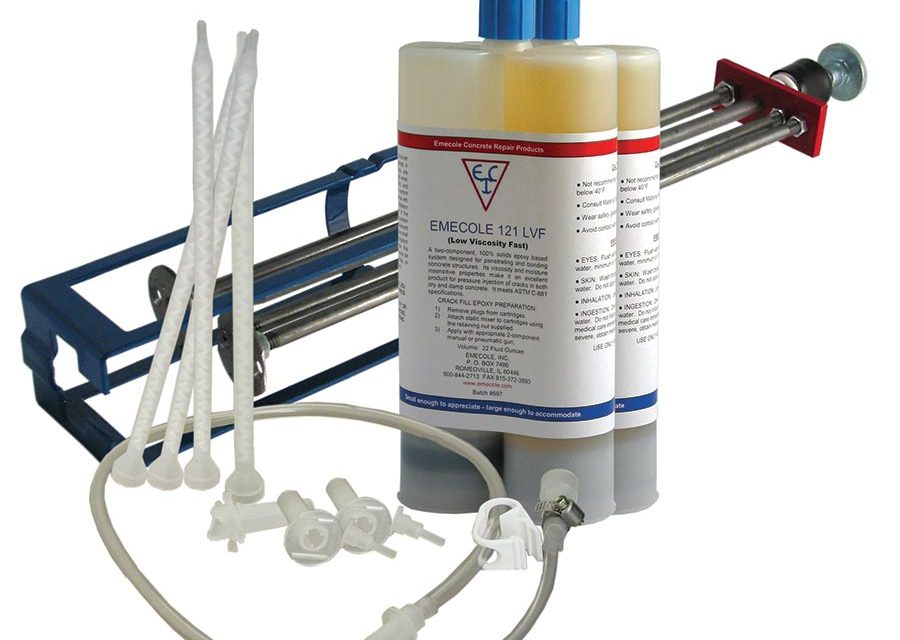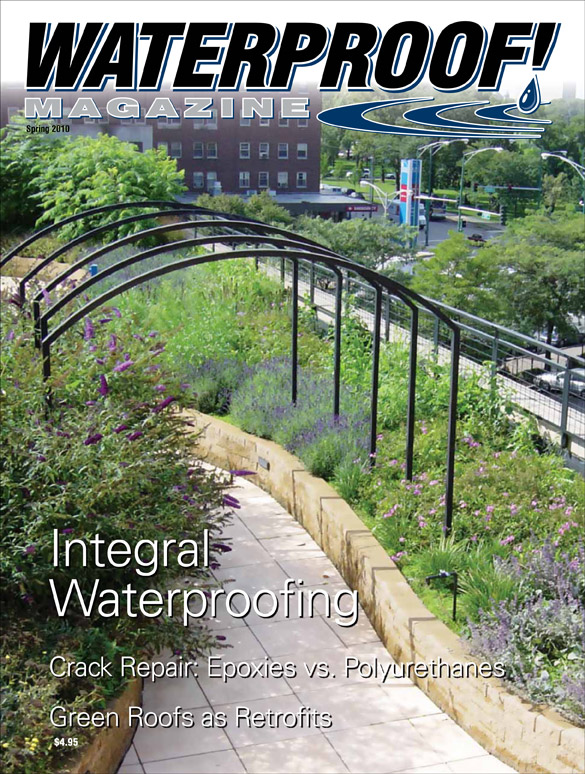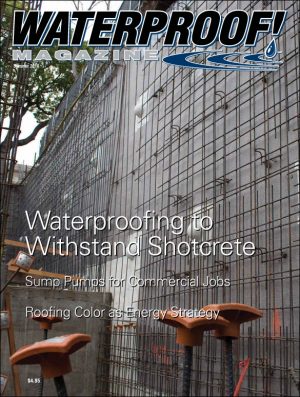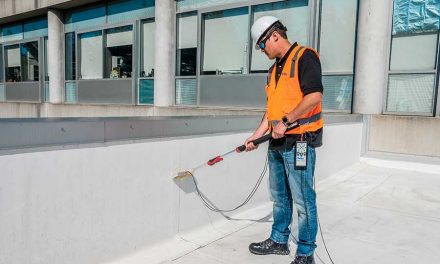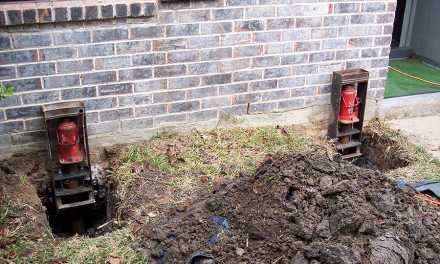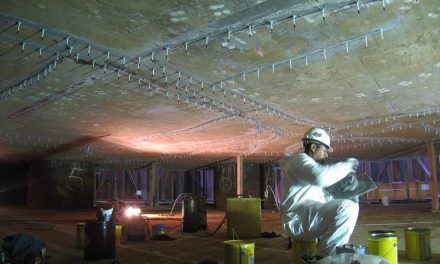By Louis F. Cole
When repairing a foundation wall with an epoxy or polyurethane foam polymer, the preferred method is low pressure injection. The secret to effective crack injection is gradual introduction of the liquid polymer into the crack at low pressures (20 to 40 psi). This method requires some patience, but it allows the applicator to monitor the injection process and ensure that the crack is completely filled. Incomplete injection of a crack is the most common reason for crack repair failure.
At pressures below 40 psi, the liquid cannot overcome gravity. That means that the epoxy or polyurethane can only move upward in the crack after filling the crack completely from front to back. In other words, low pressures ensure better crack penetration. Also, the applicator can monitor the progress of filling the crack by watching. Because the crack itself is sealed, the applicator monitors the liquid moving up the crack by watching for it to begin coming out of the port above the one being injected.
At pressures above 40psi, the liquid has enough force to overcome gravity and takes the path of least resistance. It can rise from port to port without filling the backside of the crack, which is typically narrower than the front of the crack. High-pressure injection is better suited for repairing cracks in very thick-walled structures or where a high volume of water flow must be stopped, such as dam repairs.
To properly inject a crack, first apply all the injection ports and make sure the crack otherwise sealed. Then, begin injecting at 20-40psi at the lowest port on the wall and continue until the polymer begins to ooze out of the port above it. That’s the visual sign that the crack has been filled to that level, front to back. Plug the port with the cap provided and move up to the next port, repeating this procedure until the entire crack has been filled with epoxy or polyurethane.
The whole purpose is to fill the crack with epoxy or polyurethane, from front to back, bottom to top. This method is effective for filling cracks 0.002 to one inch wide in walls up to 12 inches thick. It can also be used to fill cracks in concrete floors and ceilings.
A spring-assisted dispensing tool, such as the Jake injection tool, allows control of injection pressures. The user simply permits the force of the compressed spring to inject the polymer. Air-powered tools are also available for dual-cartridge dispensing and allow control of injection pressure. Be aware that usage of other conventional dual manual tools can result in injecting at pressures much higher than desired with subsequent incomplete filling of the crack. A proper dispensing tool, coupled with the appropriate dual cartridge and static mixer results in an accurately proportioned and mixed system.
The dispensing system requires minimal maintenance and virtually no cleanup. At the end of the day, you simply discard the spent cartridges or reseal a partially used cartridge for reuse on another job. Each dual cartridge typically contains 16 to 22 ounces of material.
Louis Cole is the owner and president of Emecole, Inc., a manufacturer and supplier of concrete crack repair materials and basement waterproofing products to contractors since 1987. For additional information, visit www.emecole.com or call 800-844-2713.
Spring 2010 Back Issue
$4.95
Understanding Integral Waterproofing
Options in Grout: Urethanes versus Epoxies
Green Roofs as a Retrofit
AVAILABLE AS DIGITAL DOWNLOAD ONLY
Description
Description
Understanding Integral Waterproofing
Instead of relying on membranes installed after the pour, integral waterproofing uses admixtures to make the concrete itself impenetrable to moisture. Some will self-heal minor cracking, too. It’s especially useful in highly corrosive environments and for blindside work.
Options in Grout: Urethanes versus Epoxies
These two types of products both have a place in concrete repair, but they are not interchangeable. We’ll cover the advantages and disadvantages of each, along with how this knowledge can improve your bottom line.
Green Roofs as a Retrofit
Despite the weight of living roofs, many are finding that existing buildings can be installed much more easily than previously thought. Case studies of both small and large jobs will illustrate solutions for soils, structural support, and waterproofing.
Additional Info
Additional information
| Magazine Format | Digital Download Magazine, Print Mailed Magazine |
|---|

